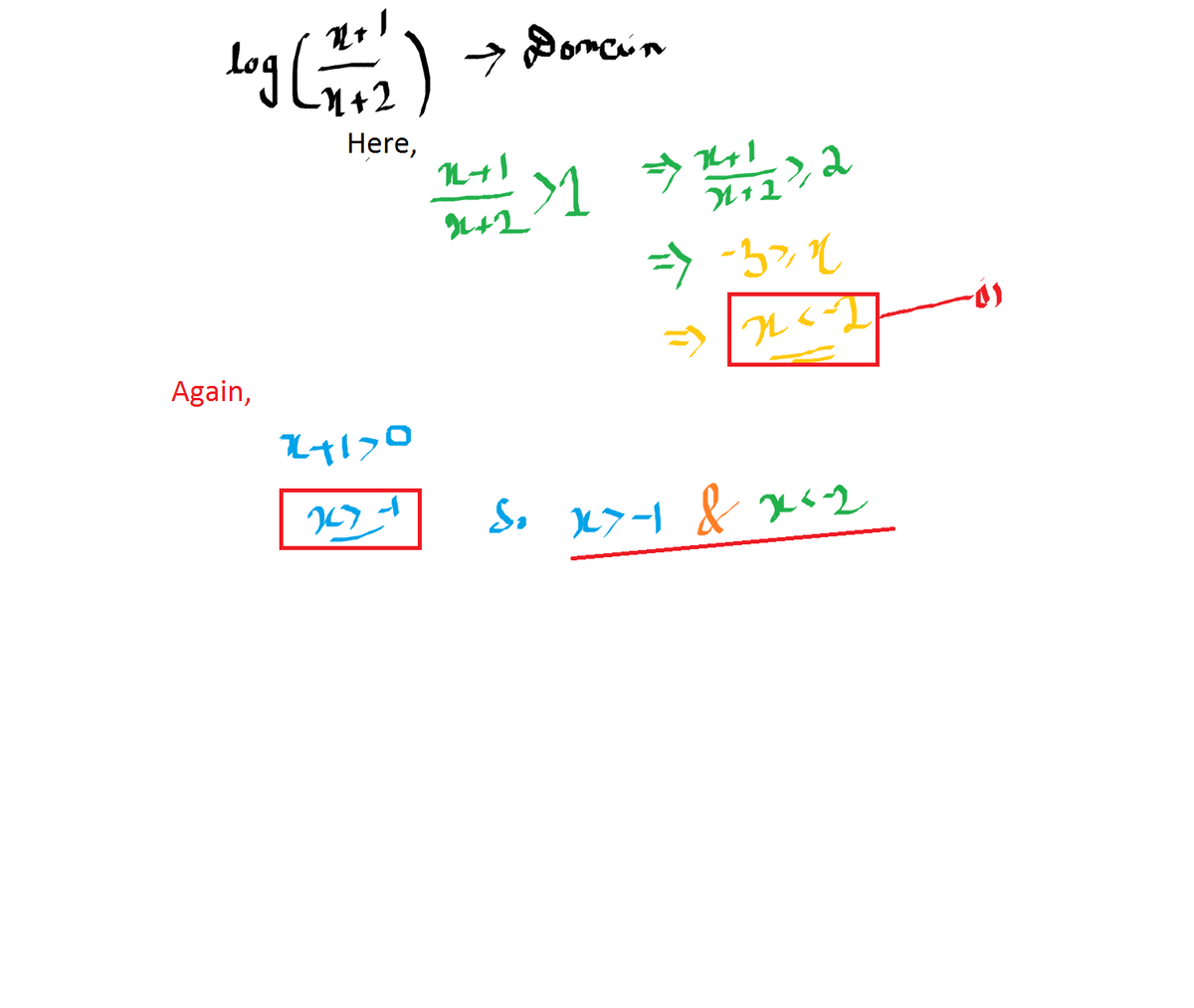This section requires Javascript.
You are seeing this because something didn't load right. We suggest you, (a) try
refreshing the page, (b) enabling javascript if it is disabled on your browser and,
finally, (c)
loading the
non-javascript version of this page
. We're sorry about the hassle.
2 solutions
Great! It's a common misconception that the domain of lo g g ( x ) f ( x ) is either x > 0 or f ( x ) > 0 . What we need is for the entire expression to be positive.
A much easier way to deal with these rational inequalities is to multiply throughout by the square of the denominator to ensure positivity. This way,
x + 2 x + 1 > 0 ⇔ ( x + 1 ) ( x + 2 ) > 0
and the rest follows.
Thanks for submitting a solution. Unfortunately, this solution has numerous issues.
- Where did the condition that x + 2 x + 1 > 1 come form?
- Is it true that if x + 2 x + 1 > 1 then x + 2 x + 1 ≥ 2 ? If so, what happens for x = 1 0 0 ?
- Are you sure that x + 2 x + 1 ≥ 2 ⇔ x + 1 ≥ 2 ( x + 2 ) ?
- Is it true that if − 3 ≥ x ⇔ x < − 2 ?
- Review sat inequalities

Since the domain of log(y) is y > 0 , therefore:
x + 2 x + 1 > 0
1 − x + 2 1 > 0
1 > x + 2 1
Now, we have two cases:
Case I : x + 2 > 0 ⟺ x > − 2
1 > x + 2 1 ⟺ x + 2 > 1 ⟺ x > − 1
As x > -1 > -2 in this case, therefore the relevant interval is x > -1 here.
Case II : x + 2 < 0 ⟺ x < − 2
Since multiplying by a negative number changes the direction of the inequality sign to the opposite:
1 > x + 2 1 ⟺ x + 2 < 1 ⟺ x < − 1
As x < -2 < -1 in this case, therefore the relevant interval is x < -2 here.
Hence, the domain of the function is:
x > − 1 and x < − 2